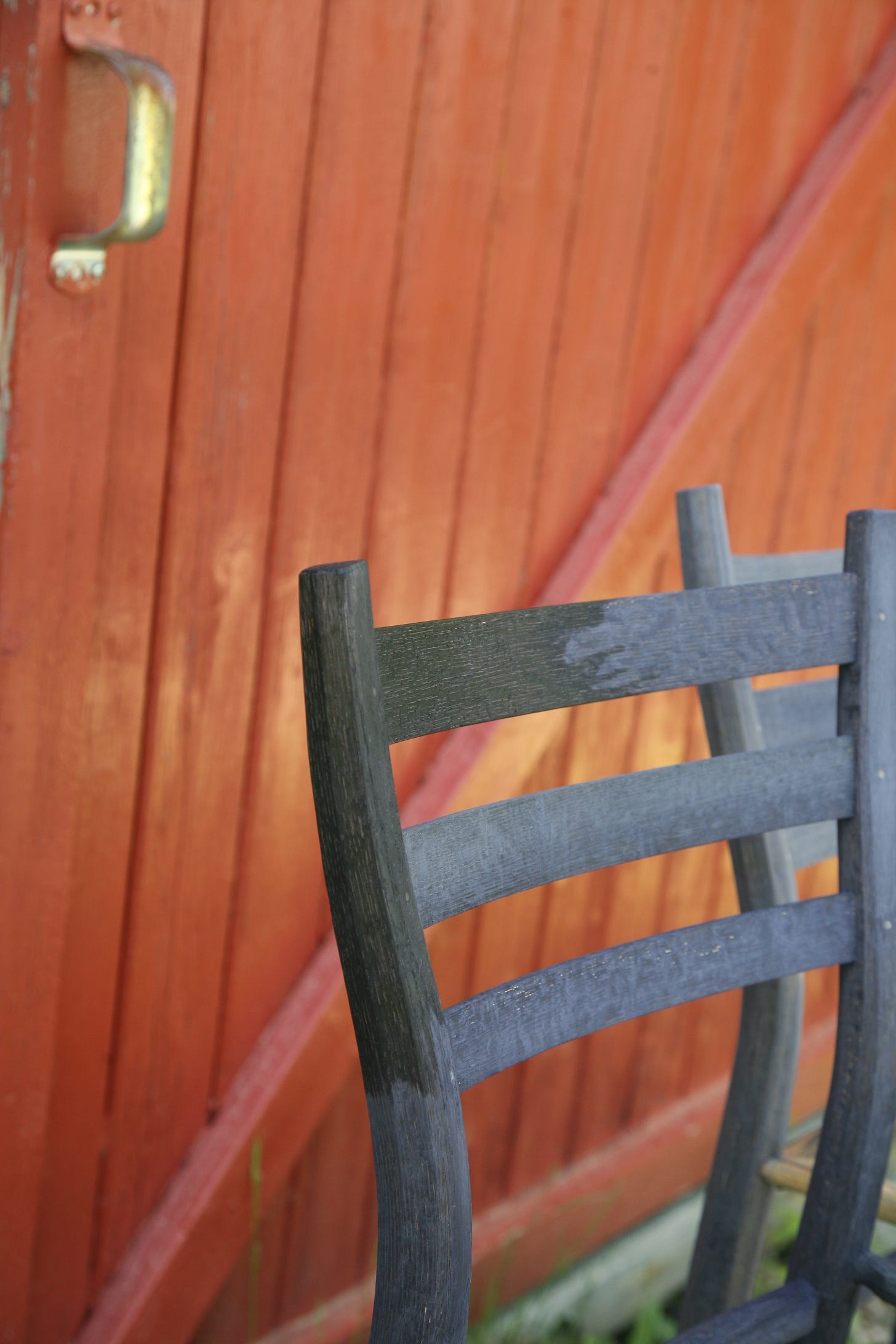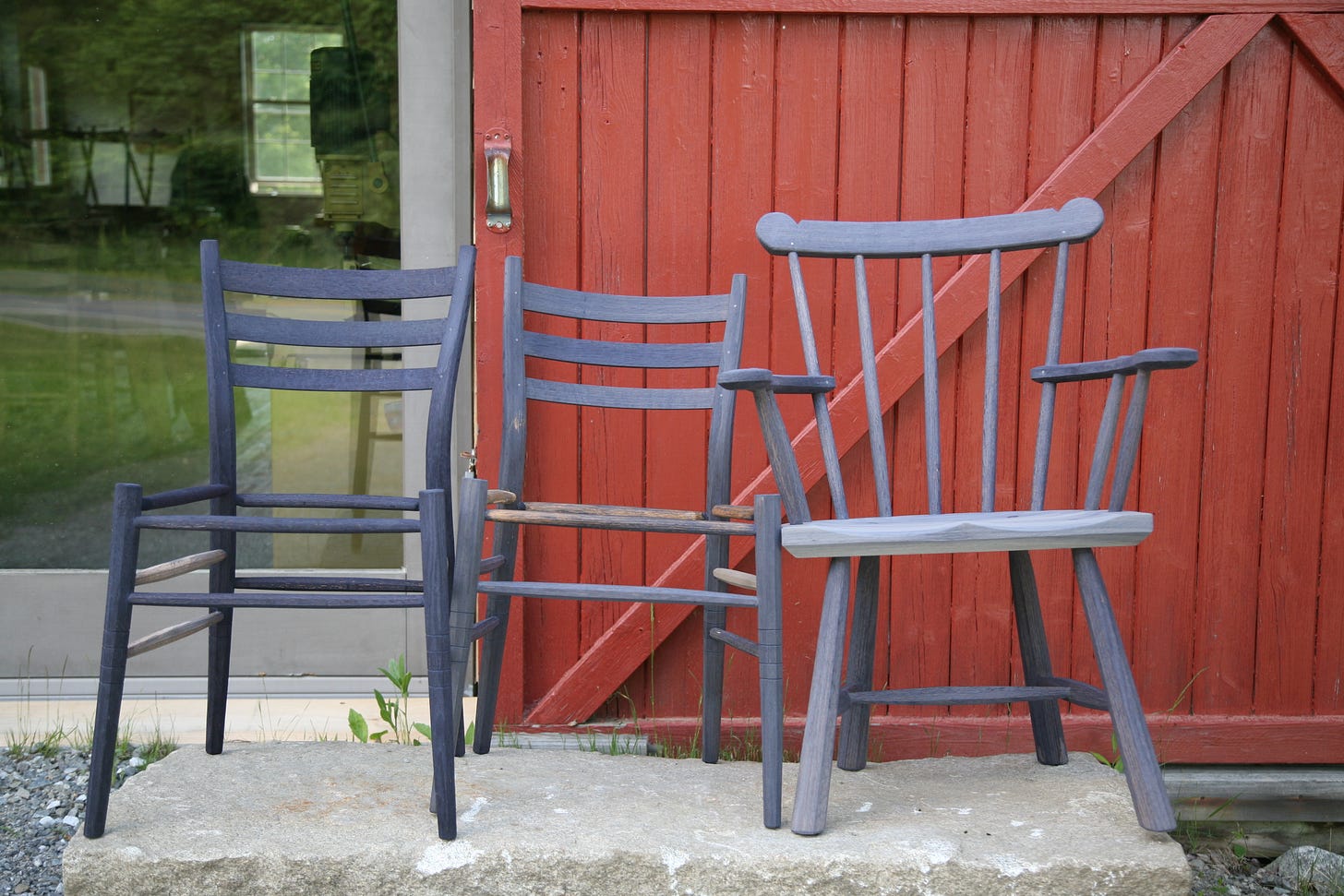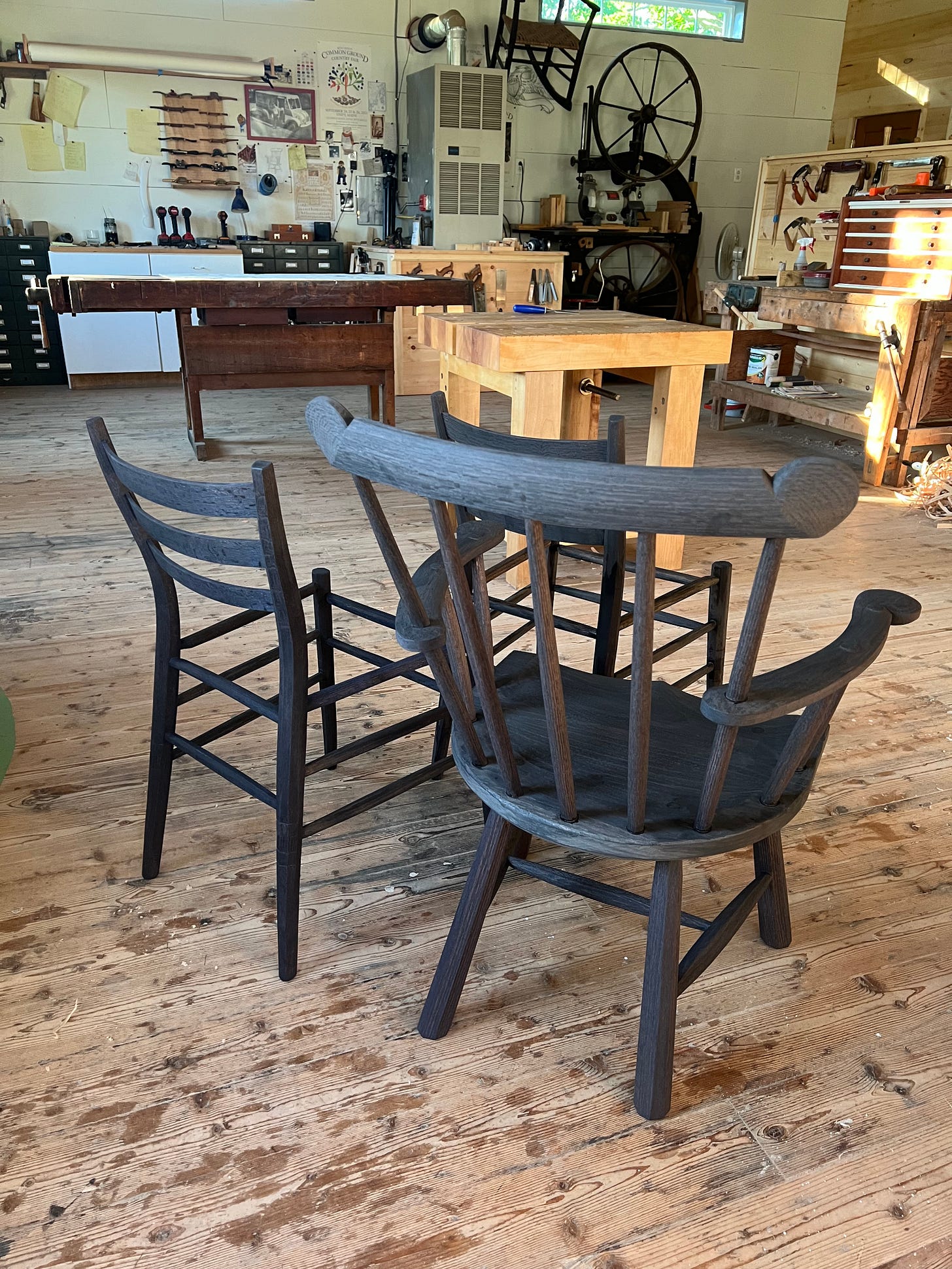Too Blue.
When ebonizing doesn't go as planned.
This past week I worked on wrapping up a few chairs. The three chairs are from recent classes, and if I don’t complete them, they’ll stick around in the loft of the shop as zombies, still requiring too much labor to simply “wrap up during down time” but much too far along to abandon. So I’m trying to get them done before they become after thoughts.
I’ve gone to near exclusive use of red oak since moving back to Maine. I love working with it and we have it in abundance in the Midcoast. But I’m not enamored with red oak if it’s finished with a clear oil or wax. I find the open grain distracting, and the tone is often too pale for my preference.
I usually finish the red oak with either an ebonizing technique or with Milk Paint’s “Dark Half” product. Whichever I use, I’ll seal it with shellac and then buff on wax.
The ebonizing technique is rather simple. I place steel wool in white vinegar for around a week. Then wipe that solution onto the wood. The iron within the vinegar solution reacts with the tannins in the wood, causing a dark stain (this works well with red oak, since the wood has high tannic acid). After scuffing, I usually wipe on a strongly brewed chai tea (again, high in tannic acid) or Quebracho bark extract (which, when used with the iron solution, provides a deep, even black), then a second coat of the iron solution.

Something went awry over the weekend as I added the iron to the red oak. The iron solution created a strong purplish-blue tone. Not my preferred color and one I hadn’t experienced before. A secondary issue was that the stain did not react evenly within each chair. The stick chair was made of both kiln dried and green wood (the crest). These took the stain differently…especially the seat. The two ladderback chairs were also made with materials from multiple trees, leading to varying degrees of darkness.
The difference in stain intensity may have come from the different materials, but the blue/purple is new to me. I likely have the culprit, since I used the steel wool I had in the shop (extra fine wool from Harbor Freight), instead my usual steel wool (0000 from Rhodes American).
I don’t believe the vinegar sufficiently dissolved the Harbor Freight steel wood. Upon emptying the glass jar after the process, I noticed the three pads were all in nearly perfect condition. With previous chairs, when using the Rhodes American 0000 steel wool with vinegar, the steel wool deteriorates and deforms, rusts, and is a lumpy steel mess when cleaning out the jar. I’ll pick up a supply of the Rhodes American the next time I’m at the box store for my future chairs.
The fix here was to mix up some black Old Fashioned milk paint. A few even coasts will get me right back to where I want to be with these chairs. It’s possible the blue/purple will remain as an undertone, which is just fine. I like undertones in my chairs (ebonizing with the chai tea often results in reddish undertones).
After painting, I’ll add oil (for depth), then shellac (to seal and for sheen), then finally wax. It’s a long process but I love the final result.




The same thing happens if you use the solution after only 8 hours or so, just not enough iron dissolved out. The wool probably had a dunk of oil or something that made it harder to break down. I used to make a lot of furniture with air dried red oak and I liked the uneven nature so I’d keep testing and use the solution when it had just enough color. When you add oil over it will mellow, and the purplish color almost looks like East Indian Rosewood.
After using my own steel/vinegar solution on the chair we made during class its developed into a wonderful green baby-poo hue .... lol idk what kind of chemical reaction happened there but I'll be using india ink to remedy the issue